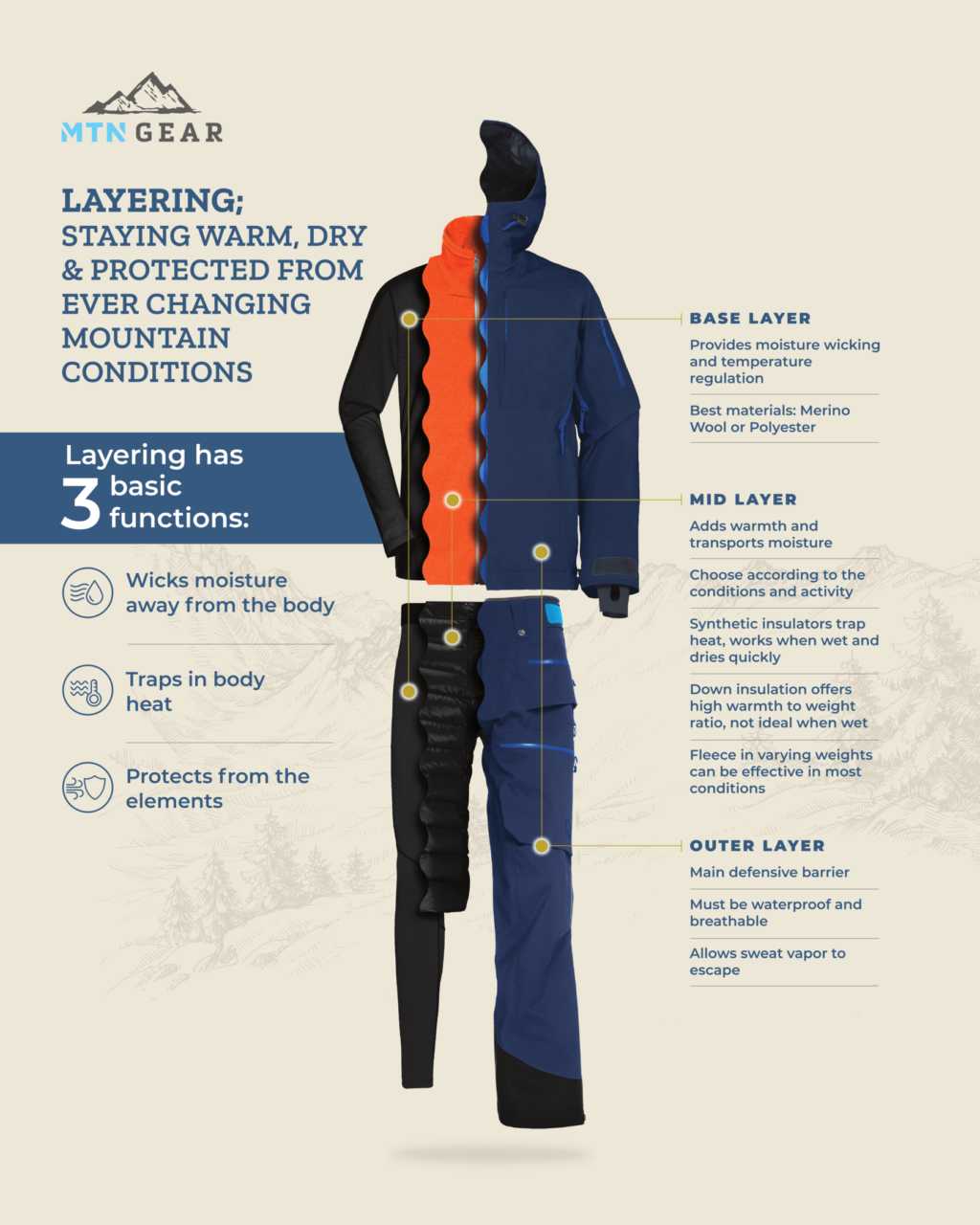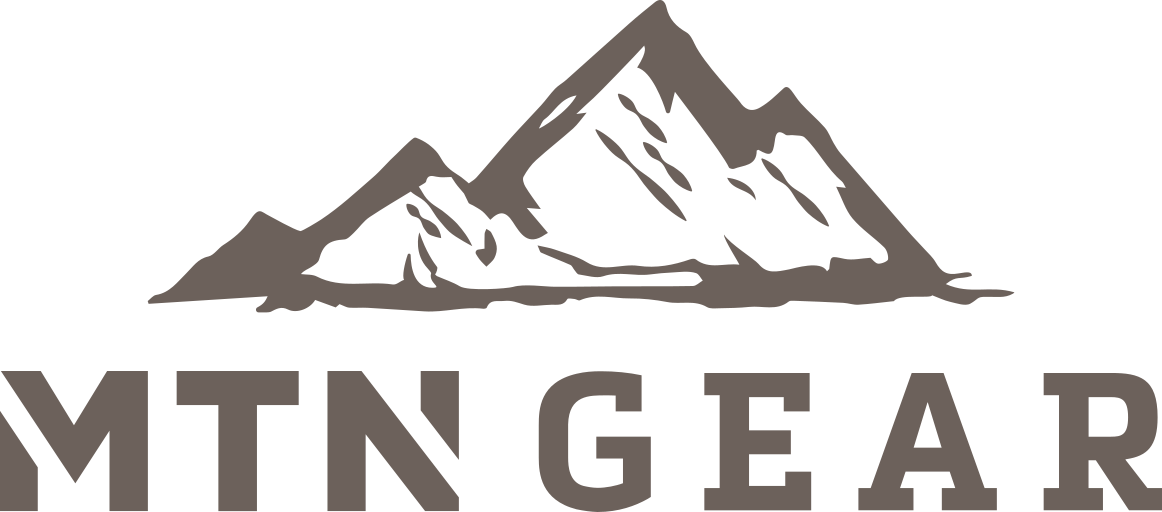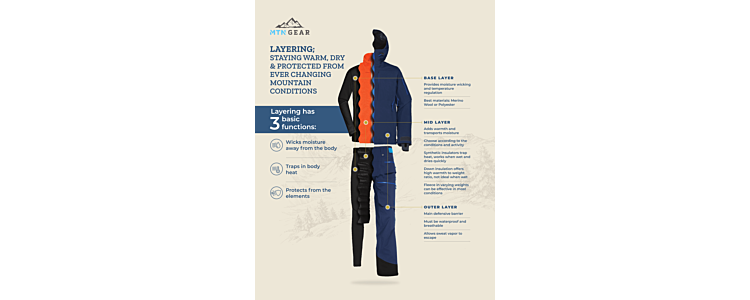Layer Up: Simple and Essential Tips for Outdoor Conditions
At MTN Gear we’re passionate about providing superior gear. The key to a great day on the hill is the right gear – and what you’re wearing is as important as what you’re riding on. Combining the right layers of clothing, or layering, is the most important part of being ready for whatever conditions you might encounter.
Proper layering can be broken down into three simple parts
Base Layer + Mid Layer + Outer Layer
Layering provides flexibility and a layering system allows you to stay comfortable no matter the conditions on the hill - from a chilly morning to a warm afternoon; or the considerable temp changes you may experience at the base of the mountain to substantially colder temps and wind at the top of the mountain. Using a layering system is a great way to adapt as conditions change and it allows you to stay comfortable as you progress through these cycles continuously throughout the day.

Outer Layer is the Protective Layer
External shells provide outstanding wind and moisture protection while allowing internal moisture to breathe through and away. You often hear about the outer layer as the protective shell. We highly recommend a waterproof shell, like Gore-Tex, especially if you're a PNW skier! Most outer layers are not designed to provide adequate insulation. Insulation comes from the base and mid layers.
Mid Layer is the Insulating Layer
An effective insulating layer will allow for moisture transport away from your body while providing warmth. There are many options for insulators and the right answer is dependent on the conditions. In general synthetic or down insulative jackets and fleece are good options.
Base Layer is the Temparture Management Layer
Select a base layer that transport moisture away from your skin while retaining warmth. It is critical that your base layer not retain moisture; base layers consisting of merino wool or polyester based generally work well. In general, it's best to stay away from cotton-based garments as cotton will absorb body moisture which will make it harder for you to stay warm during the day.
Be Prepared: Mountain Conditions Are Always Changing
Mountain weather is fickle and changes often. It can be sunny one moment and storming the next, raining at the base and snowing hard at the top of the mountain. The trick is to dress so you can adapt to any weather event. Keeping your eye on the conditions and having the right layering system will help you enjoy your outing no matter which outdoor adventure you’re looking to tackle.




